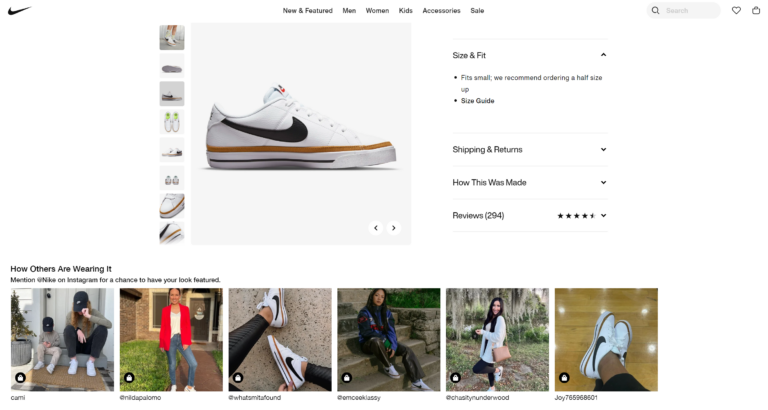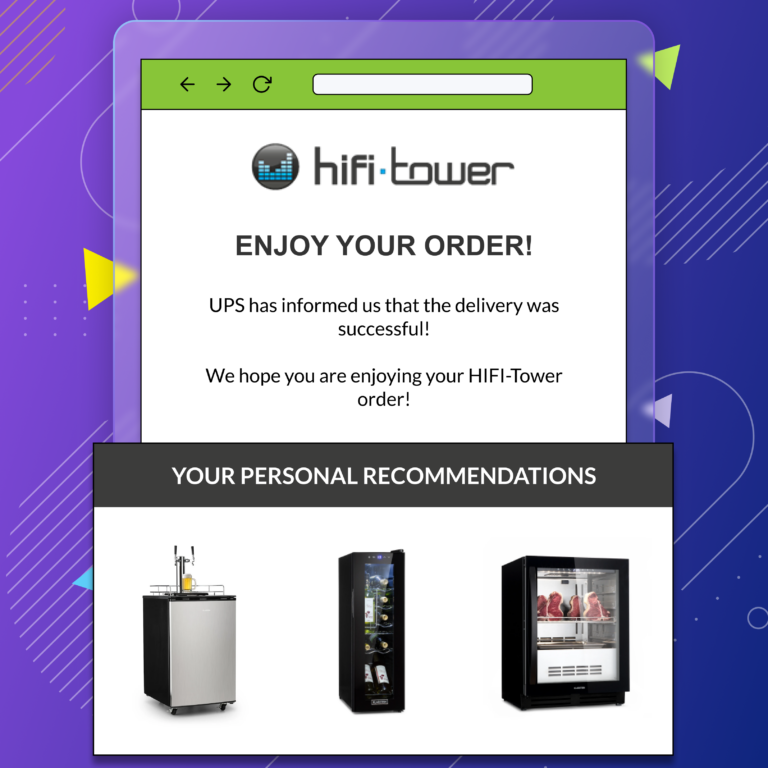Sure, the initial adrenaline rush of marketing and sales is critical, but what happens after your customer has unboxed their purchase? How do they feel about the product or service they’ve just bought from you? More importantly, what can you, as a brand, learn from these feelings and perceptions?
Finding answers to these requires implementing a well-crafted post-purchase evaluation process—and this article will show you how to do just that.
We’ll walk you through the different stages of post-purchase evaluation and what each step entails. You’ll also learn how to optimize your “after-sale” initiatives to drive positive outcomes and increase sales and loyalty.
Let’s get started.
What is post-purchase evaluation?
Post-purchase evaluation is a phase in the buying process where customers assess their satisfaction with a product or service after purchasing and using it. This stage may involve assessing the quality of their purchase, comparing it with their expectations, and providing customer feedback or reviews.
Post-purchase evaluation can lead to customer satisfaction, dissatisfaction, or post-purchase cognitive dissonance (doubts or regret about the purchase).
Needless to say, the post-purchase evaluation process significantly influences future customer satisfaction and consumer decision-making. That’s why optimizing this stage of the is essential.
The post-purchase evaluation process: 6 key steps
| Post-Purchase Evaluation Stage | Description |
|---|---|
| 1. Unboxing | The customer's first impression of the product, based on packaging. |
| 2. Using or Consuming the Product | The customer tests and interacts with the product. |
| 3. Comparison with Expectations | The customer's experience of the product vs. their initial expectations. |
| 4. Customer Satisfaction/ Customer Dissatisfaction | The customer feels either satisfied or experiences cognitive dissonance. |
| 5. Customer feedback and Reviews | The customer provides ratings, reviews, or direct feedback. |
| 6. Keep, Return, or Dispose | The final decision the customer makes about the product. |
What exactly does the post-purchase evaluation process look like? This section will outline the stages shoppers (usually) go through when evaluating their purchase.
1. Unboxing
Believe it or not, the post-purchase evaluation process begins even before the customer uses the product. With physical goods, the unboxing experience is vital in post-purchase evaluation.
If the product is packaged well, arrives in good condition, and is easy to unpack, it will likely create a positive first impression, predisposing the customer to positively perceive the item.
Conversely, poor packaging, damage, or complicated unboxing can lead to negative first impressions, which may influence their satisfaction down the line.
2. Using or consuming the product
This is the stage where the customer actively interacts with the product. If a shopper purchases apparel, this step involves trying their new clothes. If it’s electronics, then this is where they play around with the gadget or connect it with the other devices they’re using.
The usage or consumption stage is the most crucial part of post-purchase evaluation because it’s the phase in which customers actively engage and test their purchase. Whatever happens during this step greatly influences their opinions and judgment.
3. Comparison with expectations
Every customer has some level of expectation from their purchases. And this phase is all about matching the customer’s experience of using the product against their initial expectations before purchasing.
What kinds of expectations do shoppers have? It depends.
Sometimes, there’s an expectation that a product would solve a pain point for the shopper. For instance, a customer buys a portable power bank because they’re tired of running out of phone battery life. In some cases, customers are chasing after a feeling or a need. Someone might splurge on a stylish blazer because they want to look professional and put-together.
In any case, customers will undoubtedly compare their expectations with the reality of using the product,
4. Customer satisfaction or dissatisfaction (i.e., post-purchase cognitive dissonance)
Based on the comparison between expectations and experience, customers will feel either satisfied or dissatisfied.
This stage is pretty straightforward: if the product meets or exceeds their expectations, then customers will feel satisfied. Meanwhile, they’re bound to feel the opposite if the product falls short—which is where post-purchase cognitive dissonance comes in.
What is post-purchase dissonance?
Post-purchase cognitive dissonance is a fancy term to describe customer dissatisfaction. It usually comes up when a product fails to meet the customer’s expectations. Post-purchase cognitive dissonance can be driven by several factors including:
The price of the purchases. The higher the price tag, the higher risk for post-purchase cognitive dissonance. Customers who don’t feel that the purchase was worth it will likely experience dissatisfaction.
Several alternatives. If there were many similar products to choose from, customers might wonder if one of the other options might have been better. This is the classic feeling of how the grass is greener on the other side.
Importance of purchase. The more important the decision, the higher the potential for cognitive dissonance. For instance, choosing a car or a home can lead to more cognitive dissonance than selecting a brand of coffee.
Values and perception. If the purchase conflicts with the buyer’s personal values or self-image, this can also cause cognitive dissonance.
5. Customer feedback and reviews
Depending on what happens in the abovementioned steps, the customer may provide feedback through ratings and reviews.
Not everyone will take the time to write a product review, but this doesn’t mean they’re not offering customer feedback. In certain cases, shoppers send feedback directly to the brand or share their thoughts with their family and friends.
6. Keep, return, or dispose of the product
This is the last step of the post-purchase evaluation process. Think of it as the final verdict of the post-purchase journey. Taking into account the customer’s overall experiences, they’ll either keep the product, return it, or dispose of it
Ecommerce post-purchase evaluation: making the process work for you
Customer perception isn’t always in your control. Some shoppers are harder to please than others. In addition, how a customer feels about your products can be influenced by things like their environment, network, mood, etc.
The good news is that several factors are actually within your control. There are components in the purchasing cycle that you can improve in order to create a favorable post-purchase evaluation process.
Consider the following.
Make a great first impression
It’s not always fair, but first impressions do matter. That’s why you must strive to create a memorable unboxing experience.
Apple arguably pioneered the practice of memorable unboxing experiences. Back when unboxing wasn’t a “thing,” most electronic companies packaged their goods using boring brown boxes.
But the folks at Apple thought differently. The company revolutionized unboxing experiences by emphasizing simplistic yet high-quality packaging, meticulously designed to create a sequence of discovery for the customer. This attention to detail, coupled with consistent branding, not only enhances the product’s perceived value but also fosters a strong emotional connection with customers, turning a simple unboxing into a memorable event.
Set the right customer expectations
It’s tempting to market your products as the “best ever,” but do not overdo it. The key is to highlight the features and benefits of your products without overselling or being misleading.
A good way to set customer expectations is to display accurate item measurements and high-quality pictures. Doing so ensures that online shoppers can thoroughly evaluate their purchases, and this helps prime their mindset when items are delivered.
Nike, for example, offers clear product descriptions and is upfront about the size and fit of the merchandise. In the example below, the brand states that the particular shoe runs small, and it’s recommended that customers order half a size up.
This transparency minimizes the chances of post-purchase cognitive dissonance, helping ensure customer satisfaction and retention and bolstering its brand reputation.
Deliver on quality
No amount of pre- and can make up for poor product quality. While creative and sleek advertising initiatives can drive sales, you’ll ultimately run into returns and negative reviews if your merchandise fails to deliver on quality.
That’s why it’s essential to invest in product development and ensure that what you’re selling can a) effectively meet the needs of your customers and b) is worth the price.
Gather insights to further understand customers and improve
Encourage ratings and reviews by automatically asking shoppers to provide their thoughts.
In addition to driving user-generated content, gathering reviews can also offer valuable insights you can use to enhance your products and the customer experience.
Track key metrics with post-purchase evaluation
As the saying goes, what gets measured gets managed (and improved). To that end, ensure you’re tracking key metrics with post-purchase evaluation. These can include:
- Customer Satisfaction Score (CSAT)
- Net Promoter Score (NPS).
- Customer Effort Score (CES)
- Repurchase Rate
- Return Rate
- Customer Churn Rate
- Reviews and Ratings
Increasing customer loyalty with post-purchase evaluation
Post-purchase evaluation is brimming with opportunities to drive loyalty. Understanding your customer’s expectations and satisfaction levels can give you invaluable insights for driving customer retention and loyalty.
So, find ways to nurture your customer relationships throughout the post-purchase evaluation stage. This can include leveraging post-purchase communications to follow up with shoppers, share product tips, and make relevant recommendations.
That’s exactly what the does in its post-purchase communications. Take a look at the company’s BBG message below, which contains a along with personalized product suggestions based on the customer’s purchase history.
Post-purchase evaluation underscores the importance of customer satisfaction
Understanding and optimizing post-purchase evaluation is crucial for building a successful ecommerce business. The key is to manage customer expectations, deliver on quality, and use data to continually improve the ecommerce experience.
Remember, a customer’s purchasing journey doesn’t end at the point of sale; their significantly impacts their overall perception of your brand and their likelihood to repurchase.
FAQ
By leveraging post-purchase evaluation, you can gain insights into your customers’ experiences and satisfaction levels. Monitoring this process allows you to improve product quality, rectify issues, and set accurate expectations. These actions are crucial for retaining shoppers, as they ensure positive experiences, reduce customer dissatisfaction, and help build lasting relationships with your customers.
You can measure the impact of post-purchase evaluation by tracking key metrics like Customer Satisfaction Score (CSAT), Net Promoter Score (NPS), Customer Effort Score (CES), Repurchase Rate, Return Rate, and Customer Churn Rate. Additionally, analyzing reviews and ratings can give insights into customer sentiment and satisfaction levels post-purchase.
Post-purchase evaluation directly impacts brand reputation. Positive unboxing, usage experiences, and meeting customer expectations enhance your reputation and encourage positive reviews. Conversely, negative experiences or cognitive dissonance can damage your brand. As such, effectively managing post-purchase evaluation helps maintain a good brand image, retain customers, and attract new ones.
Written by




